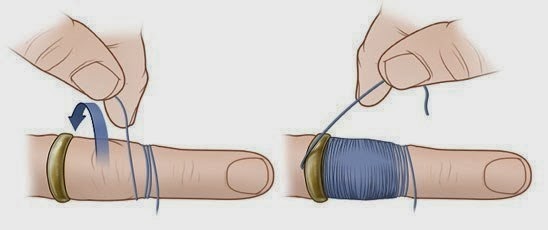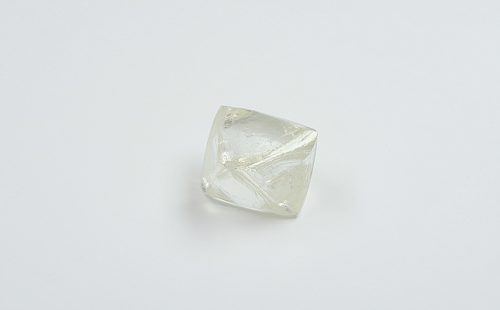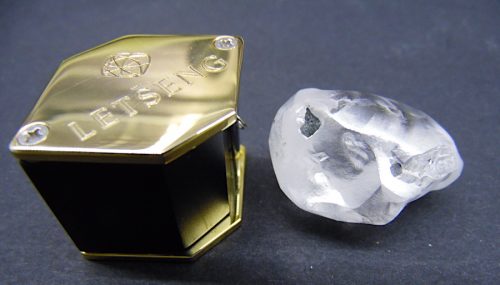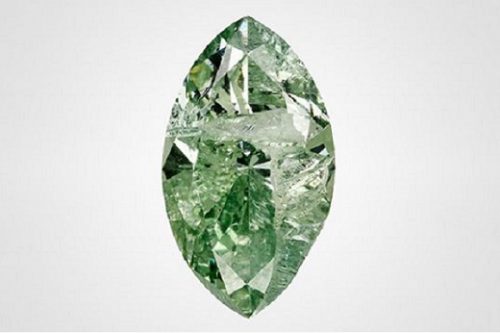
When you can’t simply slide your ring off, try these steps for safely removing a ring:
- Squirt some Windex – yes Windex – on the finger and ring. Or, use any lubricant such as soap or oil.
- Elevate the hand overhead for 5-10 minutes with ice around the ring and finger.
- Use dental floss or a thread to compress the swollen finger as shown:
a. Slip the thread or floss under the stuck ring with the bulk of it toward the fingertip.

b. Beginning at the top of the ring, snuggly wrap the finger with the thread/floss around and around, compressing the finger, all the way up and over the knuckle.

c. With the end that was under the ring, begin to unwrap the thread or floss with the ring sliding over the knuckle as you go.

*If all else fails, cut the ring off with a ring cutter found in jewelry stores, fire departments and emergency rooms.
See video: https://www.youtube.com/watch?v=KJHUAwEx1bY
Source: assh.org




